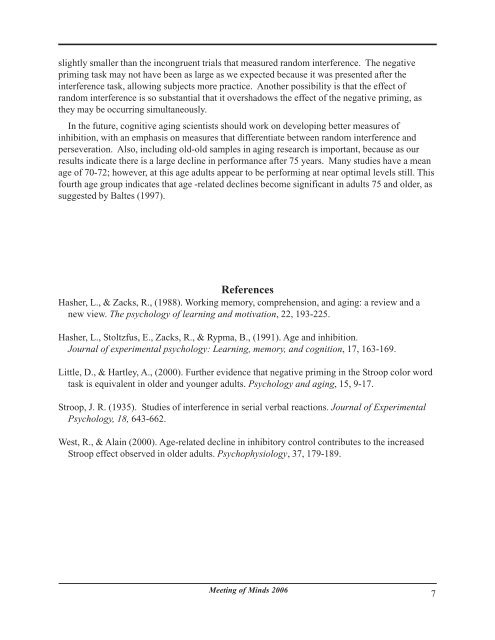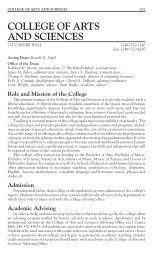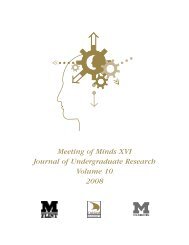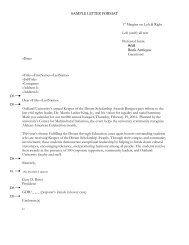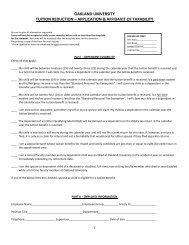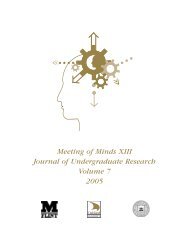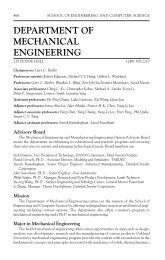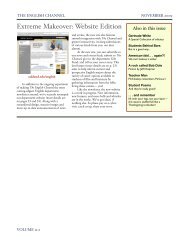MOM 2006 journal for pdf.pmd - University of Michigan-Flint
MOM 2006 journal for pdf.pmd - University of Michigan-Flint
MOM 2006 journal for pdf.pmd - University of Michigan-Flint
Create successful ePaper yourself
Turn your PDF publications into a flip-book with our unique Google optimized e-Paper software.
slightly smaller than the incongruent trials that measured random interference. The negative<br />
priming task may not have been as large as we expected because it was presented after the<br />
interference task, allowing subjects more practice. Another possibility is that the effect <strong>of</strong><br />
random interference is so substantial that it overshadows the effect <strong>of</strong> the negative priming, as<br />
they may be occurring simultaneously.<br />
In the future, cognitive aging scientists should work on developing better measures <strong>of</strong><br />
inhibition, with an emphasis on measures that differentiate between random interference and<br />
perseveration. Also, including old-old samples in aging research is important, because as our<br />
results indicate there is a large decline in per<strong>for</strong>mance after 75 years. Many studies have a mean<br />
age <strong>of</strong> 70-72; however, at this age adults appear to be per<strong>for</strong>ming at near optimal levels still. This<br />
fourth age group indicates that age -related declines become significant in adults 75 and older, as<br />
suggested by Baltes (1997).<br />
References<br />
Hasher, L., & Zacks, R., (1988). Working memory, comprehension, and aging: a review and a<br />
new view. The psychology <strong>of</strong> learning and motivation, 22, 193-225.<br />
Hasher, L., Stoltzfus, E., Zacks, R., & Rypma, B., (1991). Age and inhibition.<br />
Journal <strong>of</strong> experimental psychology: Learning, memory, and cognition, 17, 163-169.<br />
Little, D., & Hartley, A., (2000). Further evidence that negative priming in the Stroop color word<br />
task is equivalent in older and younger adults. Psychology and aging, 15, 9-17.<br />
Stroop, J. R. (1935). Studies <strong>of</strong> interference in serial verbal reactions. Journal <strong>of</strong> Experimental<br />
Psychology, 18, 643-662.<br />
West, R., & Alain (2000). Age-related decline in inhibitory control contributes to the increased<br />
Stroop effect observed in older adults. Psychophysiology, 37, 179-189.<br />
Meeting <strong>of</strong> Minds <strong>2006</strong><br />
7


